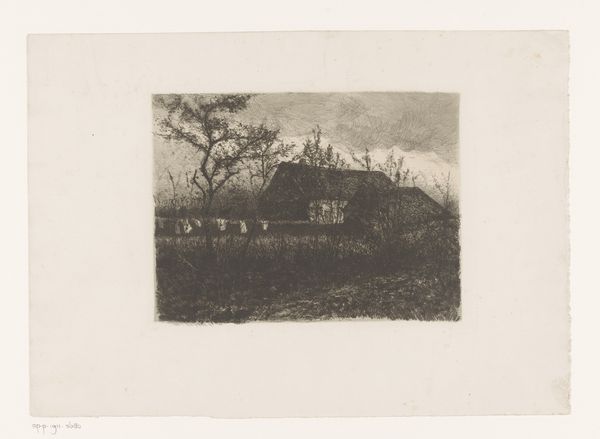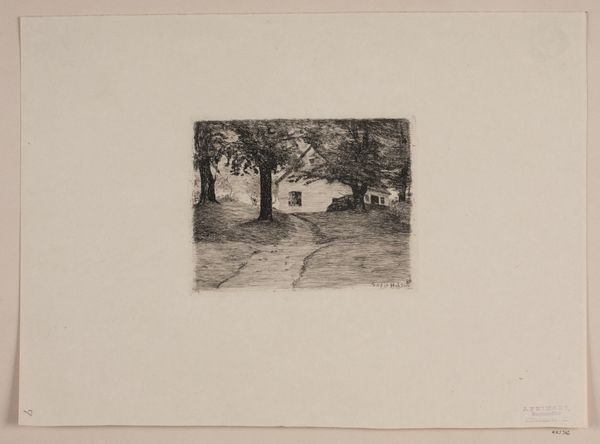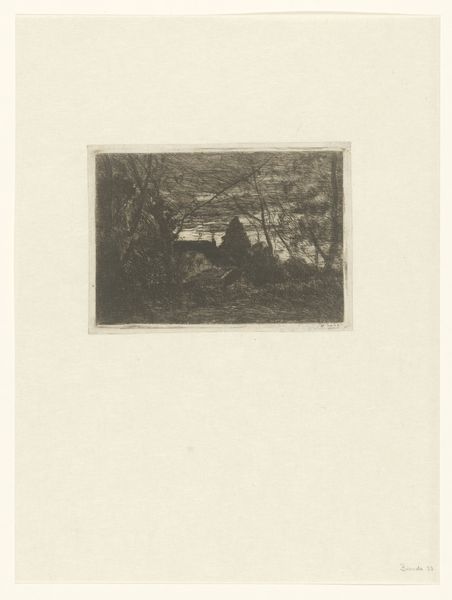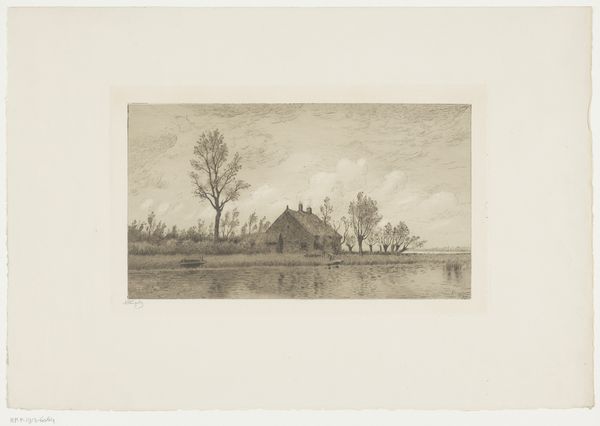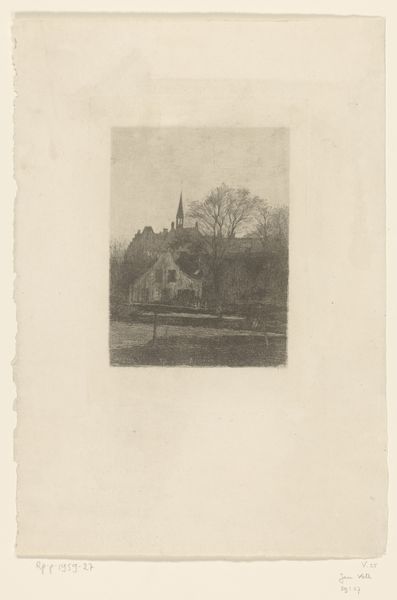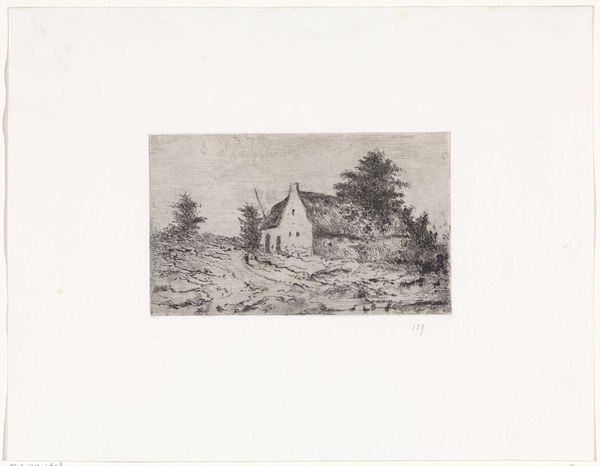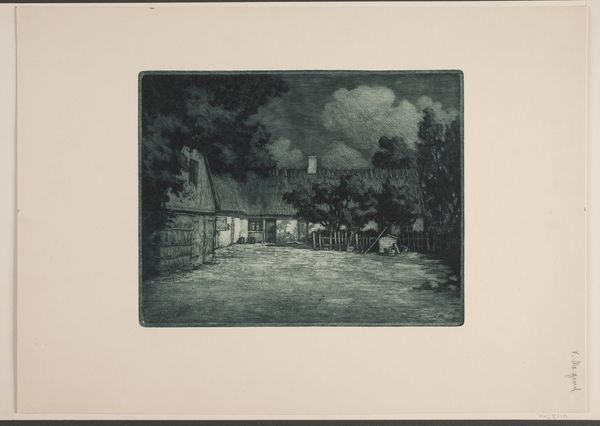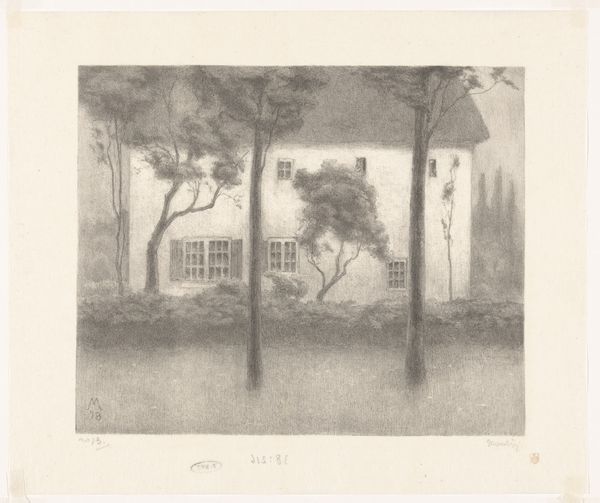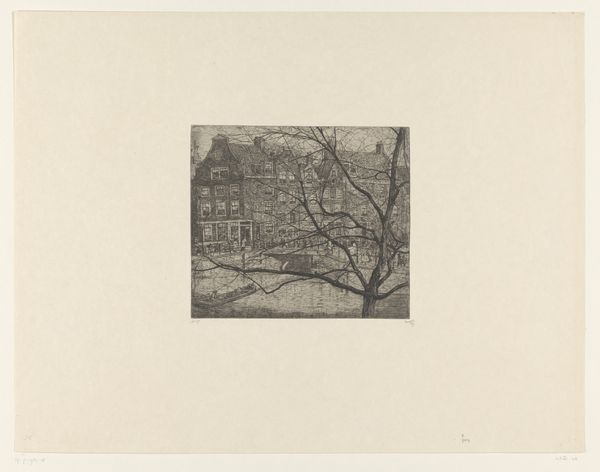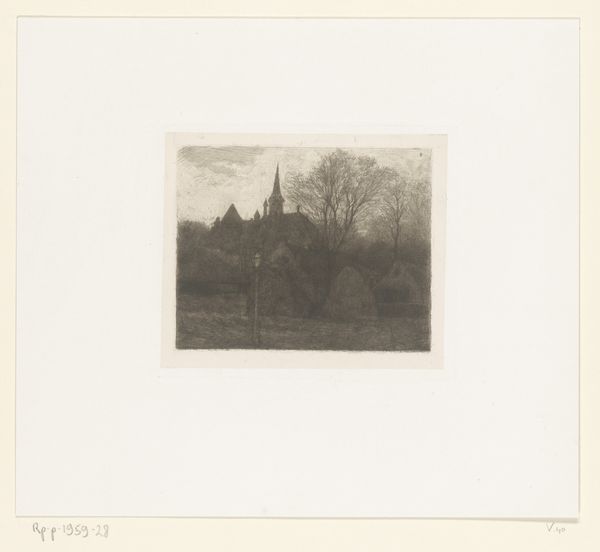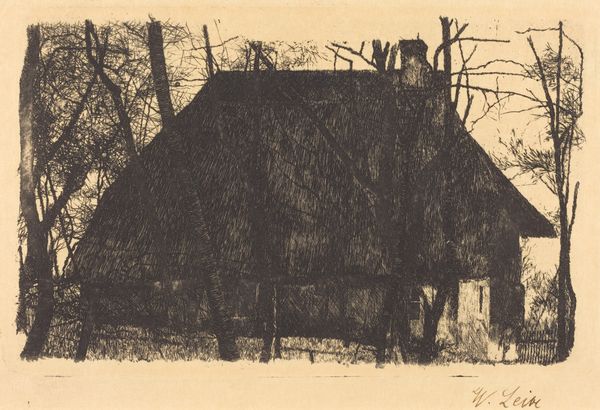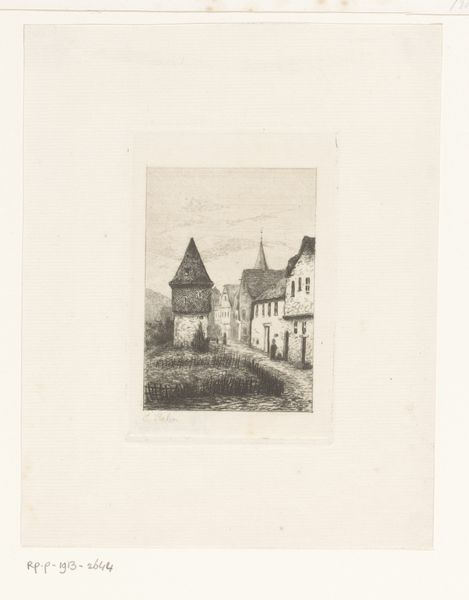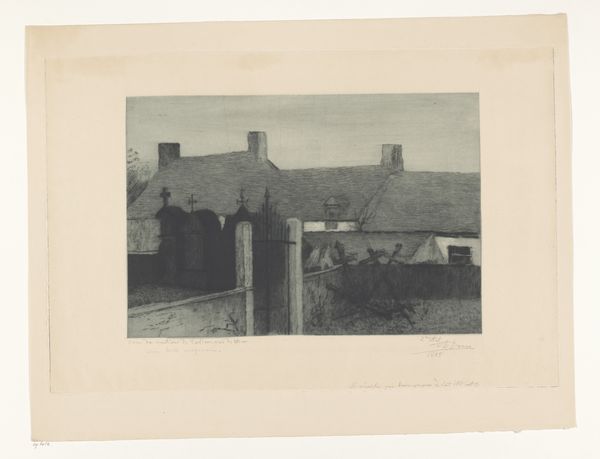
Dimensions: 183 mm (height) x 236 mm (width) (plademaal)
Editor: Here we have Adolph Larsen's 1898 etching, "Moonlit Evening in the Village of Borup," printed on paper. The tonality strikes me; there's so much darkness, yet the cottage glows softly. What stands out to you in terms of the formal elements at play? Curator: I am particularly drawn to the strategic use of negative space. Note how the inky blackness surrounding the cottage and trees actually defines and intensifies their forms. Consider the texture achieved through the etching process – the way the varying densities of lines create depth and volume. How does the interplay between light and dark contribute to the overall structure? Editor: It's true; the light isn't just illuminating; it’s sculpting the image. What’s your take on how the artist's technique informs the meaning? Curator: The etching technique, with its capacity for fine detail and tonal variation, is crucial here. Larsen’s precise rendering of the textures – the rough thatch of the roof, the dense foliage – emphasizes the tangible reality of the scene. But how does he go further? Does this materiality invite or repel, welcome the viewer or create a threshold? What semiotic codes emerge through it? Editor: That's fascinating. I was initially focused on the scene itself but analyzing the formal aspects opens up completely new layers. Curator: Precisely. It's through understanding these formal elements that we can truly decode the artwork's complexities and access its full potential of expression. By examining texture and value alone, it could be argued that any narrative interpretations or symbolisms simply don't carry that same degree of analytic weight. Editor: It's a reminder to really look closely at the "how" as much as the "what". Thanks for the insightful discussion! Curator: A rewarding perspective. The careful study of composition always yields a deeper appreciation.
Comments
No comments
Be the first to comment and join the conversation on the ultimate creative platform.
